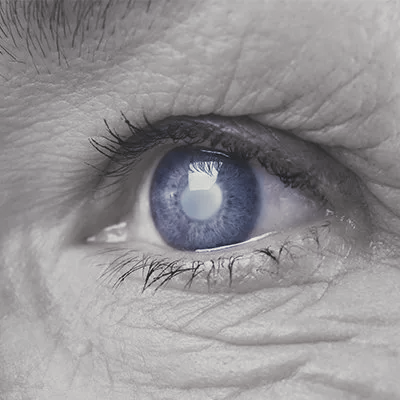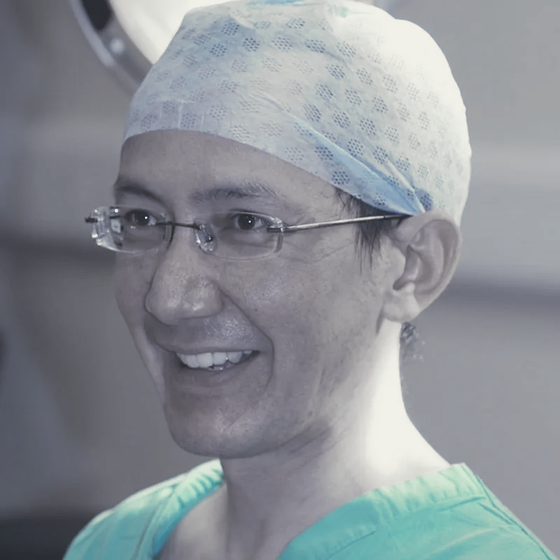Cataract Surgeon
Newcastle
OUR SURGICAL EYE PROCEDURES
- Cataract Surgery
- Watery Eyes
- Eyelid Lumps and Bumps
- Eyelid Malposition
- Eyelid Tumours
Mr Eric Barnes MRCP FRCOphth
Eric spent 3 years training in General Medicine followed by another 9 years training in Ophthalmology. During that period he worked at many London Teaching Hospitals including St Thomas’s, Charing Cross, Chelsea and Westminster, The Western Eye and Moorfields Eye Hospital.
Appointed as a consultant at the Newcastle RVI in 2001 Eric has a clinical interest in cataract surgery, peri-ocular tumours, eyelid malposition and watery eyes.
PATIENT TESTIMONIALS
THE EYE BLOG

by Eric Barnes
•
11 January 2023
Since my last blog 2 years ago we have experienced turbulent times, in the NHS. Once the restrictions were lifted, we found ourselves in a sea of cataracts. Clinics were emotional rollercoasters with several clinics in succession studded with patients so poorly sighted that they could not see the consultation chair. Thankfully, they all managed to leave the RVI with better vision on their return home! Such is the miracle of modern cataract surgery. When the chips are down, the NHS steps up to the mark to help the most needy. I wish I’d managed to record the joy of a patient shouting that he could see,as I was typing up the operating notes! The waiting list for surgery was terrible after the pandemic and all my general clinics were converted to Action for Cataract clinics, which I run with a team of able staff. The waiting list is being whittled down but difficult times lie ahead for the future of cataract surgery locally. With the struggle to bring down the waiting list has come outside competitors, eager to take NHS money for their own profit. Their strategy is simple, encourage the opticians to refer patients to them with a monetary incentive for their referral, cherry pick the straight forward cases that can be turned over quickly, send all the technically difficult cases to the NHS, and send all the complications of their surgery to the Emergency Eye Department! Interestingly, they seem to have a much lower threshold for proceeding with cataract surgery based on the referrals I see. They clearly feel they are doing something reasonable and positive but at the coal face, something difficult to measure is happening. We now have less money for the NHS to invest in the NHS, and fewer technically straight forward cataracts for training the future consultants. In addition, they are taking the hard working nurses and doctors for weekend locum work , which impacts on the hours they can do in the NHS. Sometimes these staff are leaving the NHS altogether to work for the private providers. Reducing the already depleted number of trained nurses for the service. Not a good recipe for a better NHS in a few years time. Almost all the NHS cataract work has now moved to the Newcastle Westgate Cataract Centre, which is opposite the main car park at the old Newcastle General Hospital. We have the capacity to do about 50 cataracts a day. Even if for some reason ,we only staffed it for 40 weeks a year, that would allow us to do 10000 cataracts a year. Pre-pandemic and independent providers, the region would do around 8000- 8500 cataracts a year, with a waiting list of roughly 12-18 weeks from referral. The crux of the problem now is staffing, partly because the independent providers are poaching our trained staff. The NHS seem powerless to defend themselves against this threat. On a brighter note, there are a group of patients who are still getting a decent service from the NHS. The patients with tumours round their eyelids, infected tear drainage systems and patients troubled by misdirected lashes on to the front of their eye will get priority surgery, as their conditions can’t wait without potential permanent detriment to their vision.. Unfortunately, that means if you have a stable non sight threatening problem, you might feel like you are waiting forever for your turn. That is definitely not the case, but the waiting times are painfully long under the current conditions.

by Eric Barnes
•
26 July 2020
During this pandemic, it has been come apparent that the NHS will not be able to push as many patients through their facilities like they used to. This is to do with creating the space for people to socially distance. To address this, the government have essentially rented space in local private hospitals to increase the number of patients we can see and operate on. The Newcastle Nuffield Hospital have been very accommodating and offer excellent facilities in the out patient department and theatres. There are strict rules for seeing patients and stricter rules when going for surgery. Out patient attendance is possible at the Royal Victoria Infirmary and the Newcastle Nuffield Hospital after a risk assessment is made. Hospitals do not want to see patients with a high temperature, a new continuous cough or those who have recently lost their sense of taste or smell (all symptoms of Covid 19). For patients who have routine, non-sight threatening conditions like cataracts, they need to meet the following criteria: 1. They must not have any symptoms of Covid 19 within the last 14 days 2. They must have not been in close contact with anyone who is suspected or proven to have Covid 19 Patients who are listed for surgery must self isolate /shield for 14 days prior to surgery and attend for a SARS CoV2 swab test around 72 hours prior to their operation. This is to confirm that they have not got Covid 19. Should they develop symptoms of Covid 19 or a positive swab test, their surgery will have to be deferred. These strict rules are designed to make the hospital environment as save and Coronavirus free as possible. Despite these strict rules, I managed to operate on 21 cataracts this week, 2 tumour reconstructions, 1 dacryocystorhinostomy and a couple of lid malposition repairs! It is particularly important to keep Coronavirus away from patients who require a general anaesthetic. General anaesthesia (but not local anaesthesia, which is how we do all our cataracts and most of our lid and tumour work) greatly increases the seriousness of Covid 19. As mentioned in my last blog, the death rate from Covid 19 rises with increasing age. What is somewhat surprising, is that a general anaesthetic greatly increases the death rate from Covid 19 if you catch it around the time of your surgery. Regardless of age, the anaesthetists quote that the chance of dying from Covid 19 is 1 in 5, if you catch it around the time of surgery. This of course means we currently avoid general anaesthesia, unless absolutely necessary.

by Eric Barnes
•
27 June 2020
During the current Coronavirus pandemic, we are responding to Government guidance and making changes to the way we offer Ophthalmology services. We will protect you by limiting travel, hospital visits wherever possible and avoiding crowds in our waiting rooms. We are committed to maintaining a safe service for all of our patients. The pandemic has affected all of us, ophthalmologists and ENT surgeons have been unexpectedly on the front lines. Alarmingly 3 consultant ophthalmologists at the Wuhan Central Hospital where the outbreak of Covid 19 was first identified have died. Patients can get conjunctivitis as part of the spectrum of symptoms in Covid 19 and ophthalmologists need to get close to their patients to examine their eyes. The government have been in a tough place and I am sure there is no real solution to our current situation. We will have to accept that most of us will get Covid 19 or wait for a vaccine, which is likely to be at least a year and of unknown effectiveness and longevity. The risk of severe problems from SARS Co V2 is linked strongly to age. The mortality statistics are frightening 4.5%, 9% and 12.5% for the 60,70 and 80 year old age groups. The only other option is shielding yourself from everyone else. My top tips for trying to avoid this highly infectious virus revolve around how the virus is spread. I believe it is largely spread by inhalation. So, my key things to avoid doing are: 1. Breathing other people’s air. a. Try to avoid places with poor air circulation. If on a bus or metro, open the windows to improve ventilation. b. Avoid talking face to face with people. c. Avoid being down wind from people if at all possible. This is particularly important when being overtaken by runners or cyclists. Their ‘cloud’ of exhaled air is greater than for pedestrians. d. Of course, keep your distance from people. e. Avoid gatherings particularly those that involve chanting or singing 2. Avoid people who are coughing like they have the plague! Hold you breath and move rapidly away from these people. 3. Besides public transport, most people’s greatest risk will be shopping for essential groceries. Ordering on-line is safest. If you don’t want to do this, minimise your interaction with people when out. 4. There is some evidence that the virus can survive on objects. Everything you touch outside your home is potentially a problem. The simple message is to avoid touching your face with your hands and wash your hands with soap and water when you come in doors. Be sensible and this will keep you safe. I hope you find some reassurance in the fact that most of us will be fine. Currently, telephone or video consultations can be made. I resumed NHS cataract operations at the beginning of June and we are doing our best to get through the backlog of about 4500 cataracts. We have been unable to assess any of the new cataract referrals since the lock down began but this should change shortly. It looks like we are in for some difficult times but rest assured we are all trying our best to tackle the backlog.










